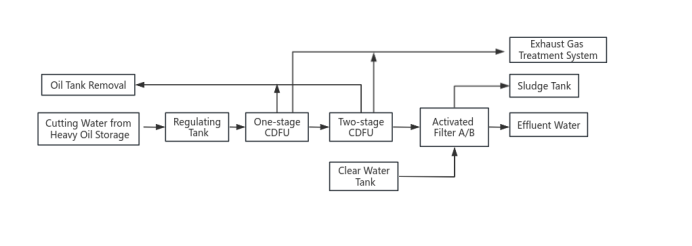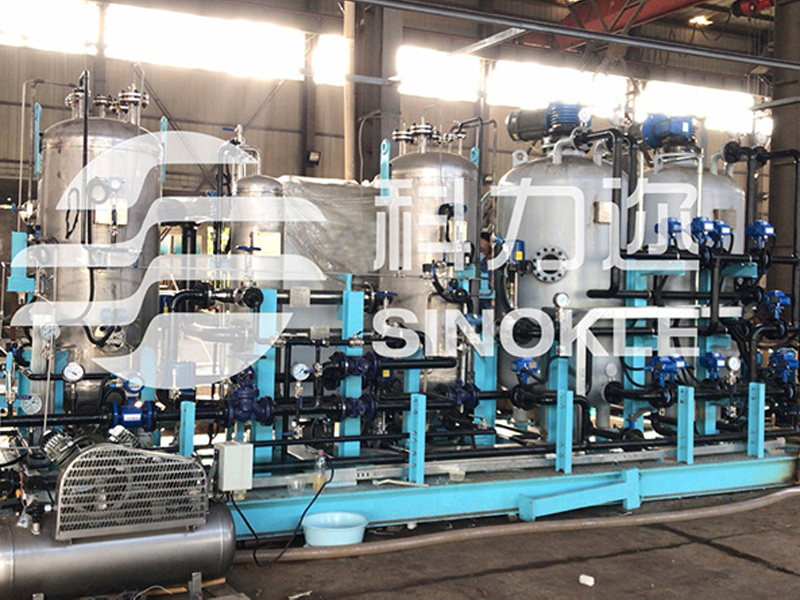Heavy Oil Storage Water Treatment
Product Detail
Process Flow

Process introduction
The cutting water from the heavy oil tank in the oil depot has a high content of oil and suspended solids, with severe emulsification and darkened water quality. It needs to be treated to meet the control target of effluent oil content less than 10 mg/L. The process is centered around the CDFU equipment, combined with an activated filter, to ensure stable effluent that meets the treatment standards.
The cutting water from the heavy oil tank first enters the two-stage CDFU for oil and suspended solids removal. The discharged oily water goes into the oily water collection tank, while the effluent enters the activated filter for filtration. The filtered effluent meets the treatment standards, and the filter undergoes regular backwashing, with the backwash water directed to the sludge tank.
Process Characteristics
The process is short, efficient, and highly resistant to impact, ensuring stable effluent quality;
• No chemicals, pure physical demulsification and separation technology with stable and effective demulsification, without generating oily sludge (hazardous waste);
• Utilizes a two-stage cyclone dissolved air flotation for pretreatment, offering strong impact resistance and ensuring stable and reliable operation of subsequent processes;
• Activated filter with high filtration precision, excellent performance, strong impact resistance, and long filter media lifespan;
• Compact design with a small footprint, suitable for applications with high space requirements;
• Fully automated and informatized operation, remote monitoring capability, requiring minimal manual intervention, resulting in convenient and cost-effective maintenance.
Technical Comparison
| No. | Traditional air float + membrane filter/filter | Two-stage CDFU+ active filter media filter (SINOKLE patented technology) |
| Process Effect | Unstable effluent, only able to remove some emulsified oil | Stable effluent,meets the treatment standards,apable of removing the vast majority of emulsified oil |
| Medicament | Addition of disinfectants, coagulants, and other chemicals | Purely physical, without chemical separation, environmentally friendly |
| Stability | Low equipment reliability and automation level, poor adaptability to water quality fluctuations and impact resistance, and poor system stability. | Fully automatic operation, multiple indicators monitored in real-time automatically, good adaptability and impact resistance, and good system stability. |
| Recovery of contaminated oil quality | Partial demulsification, high content of suspended solids and water, poor quality. | Purely physical demulsification, low content of suspended solids and water, high quality. |
| Operating costs | High energy consumption, requires the addition of chemicals, short maintenance cycle, high cost. | Low energy consumption, no chemicals, long maintenance cycle, low cost. |
| Commissioning period and land area occupancy | Traditional dissolved air flotation tank, large footprint, long construction and installation cycle, influenced by various factors such as weather and labor. | Skid-mounted equipment, small footprint, short construction, installation, and commissioning cycle (sled-mounted design, factory pre-assembly and commissioning). |

